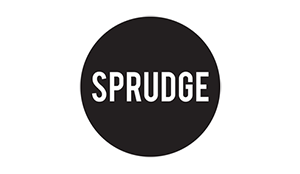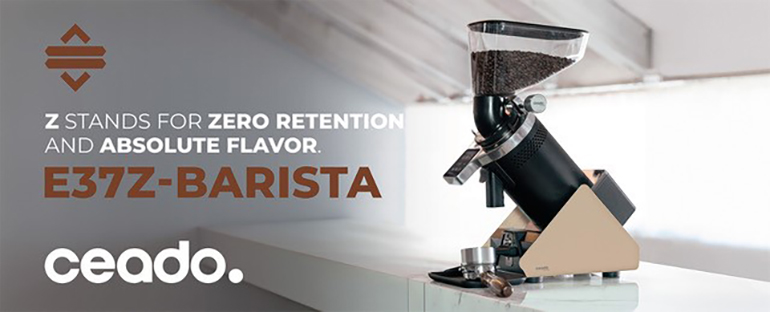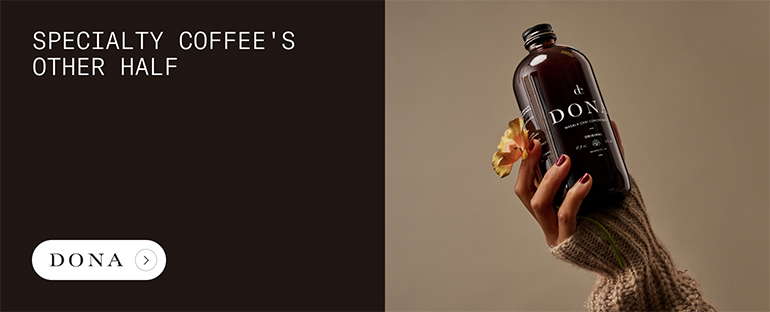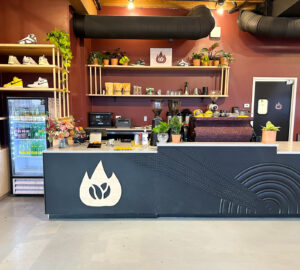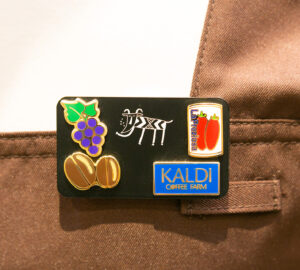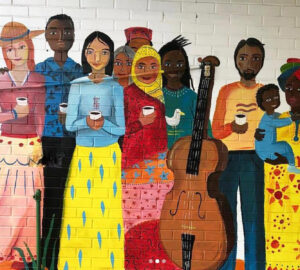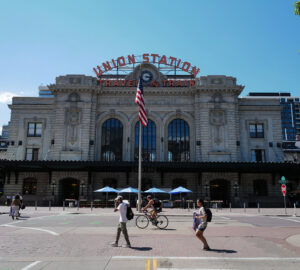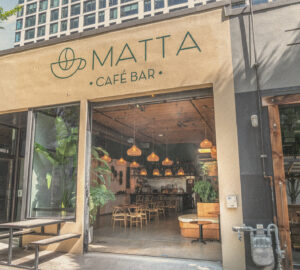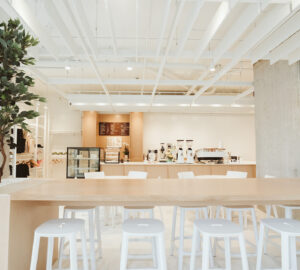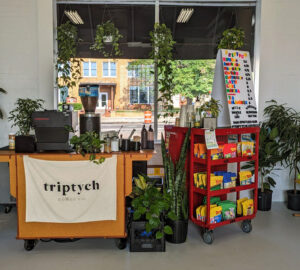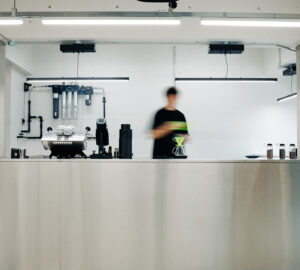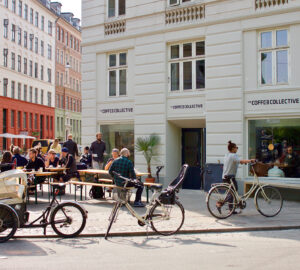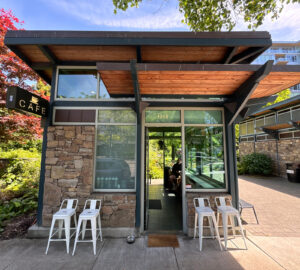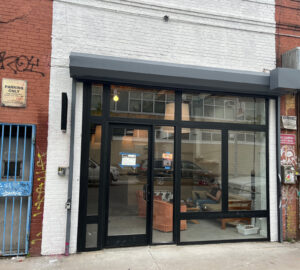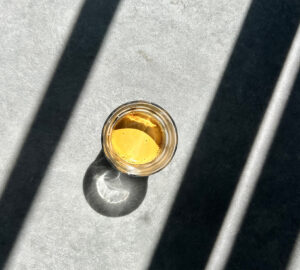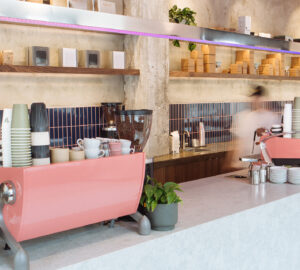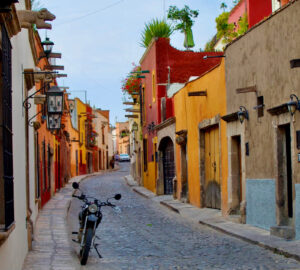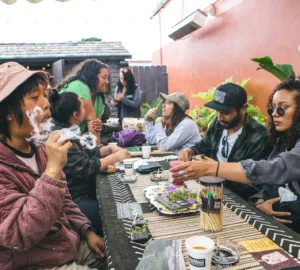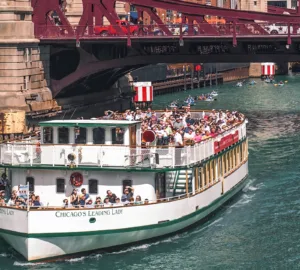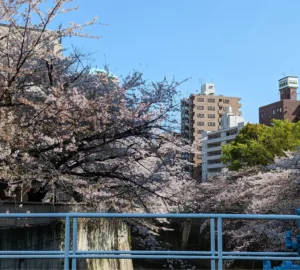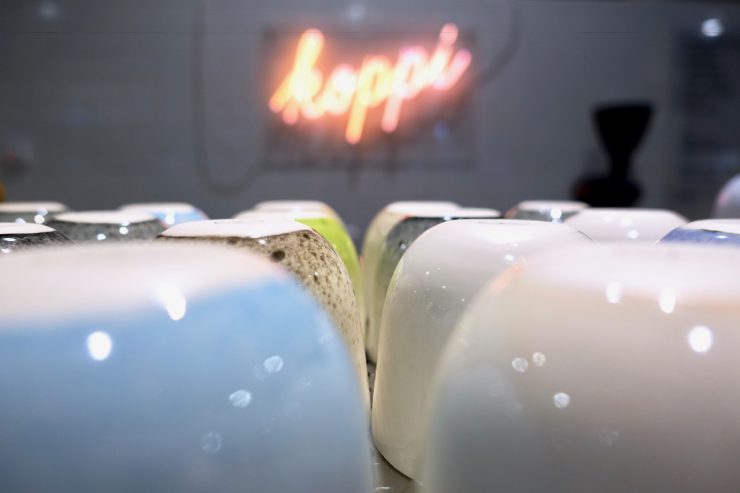
Anne Lunell and Charles Nystrand, the charming duo behind Koppi Coffee of Helsingborg, Sweden, have been making coffee together for over a decade. Despite being located in a small city on the southwest coast of Sweden (pop. 125,000), they have continuously left a mark on the coffee scene that reaches around the globe. From competing—and winning—in coffee competitions to judging them, while opening pop-ups in Stockholm, Tokyo and the restaurant Noma in Copenhagen, both Lunell and Nystrand have been active industry leaders in Sweden and abroad for over a decade. But with all that they have accomplished since they first opened Koppi in the fall of 2007, this past year may have been their biggest yet.
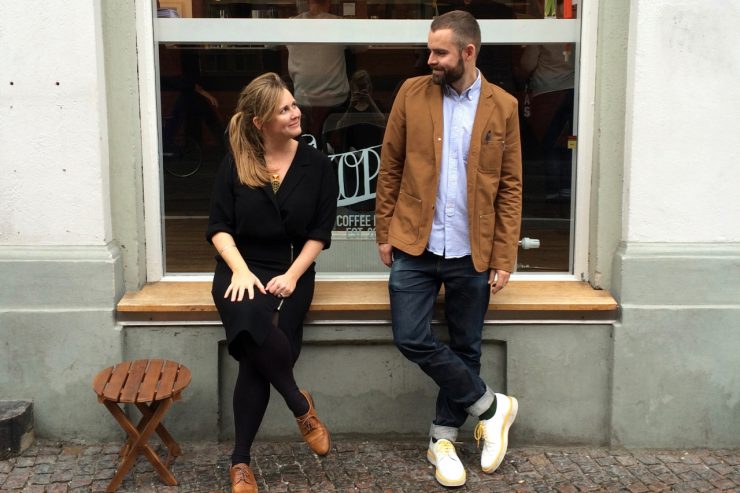
After a ten-year hiatus from the world of coffee competitions, 2016 began with Lunell winning the Swedish Brewers Cup. Not long after that victory, two of Koppi’s baristas placed first and second (respectively) in the Swedish Aeropress Championship. By the time Lunell had finished training for and competing at the World Brewers Cup in Dublin last summer, the rest of the year’s many projects began taking shape.
In August, Lunell and Nystrand hired Polish roaster Błażej Stempin, formerly at The Barn in Berlin, to expand Koppi’s roasting team for the first time since their founding. With the new roasting team in place, Nystrand moved their Diedrich IR-12 from a small nook in the back of their cafe into a 2000 square foot production space of its own. The move created more seating in their cafe and provided much more space for the expansion of Koppi’s coffee roasting and wholesale operations. By October of 2016, Lunell and Nystrand were breaking ground on the build-out of their second retail location, a coffee bar inside of the brand new Malmö Saluhall (food hall) that opened just six weeks ago, in mid-November of last year. Finally, to wrap up a year of exciting changes for the company, they released their completely re-designed packaging just in time for the 2016 holidays.
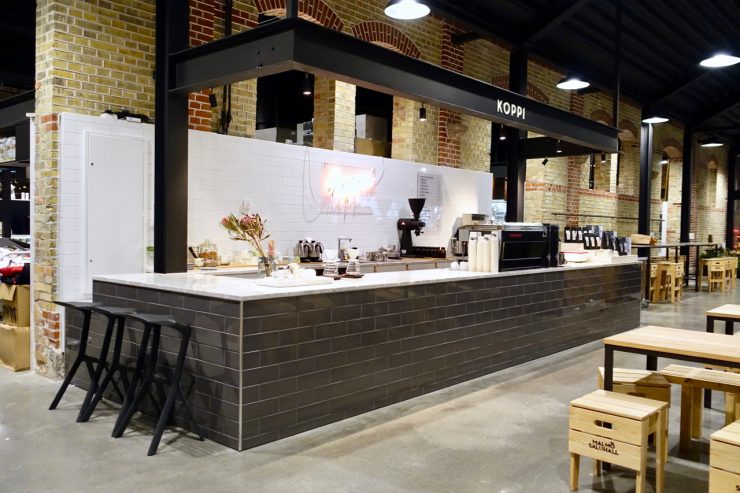
Shortly after they opened, I visited the new Koppi roastery in Helsingborg and their latest coffee bar in Malmö, and on January 1st of 2017 I sat down with Lunell and Nystrand for an expansive interview. With the soft sounds of Thelonious Monk strolling his fingers across a piano and our cups filled with a fresh brew of Koppi’s Colombia El Triunfo, I learned about the details, challenges, and rewards behind the company’s many projects—from the value of competing to the challenges of brewing 100 cups an hour in a busy food hall.
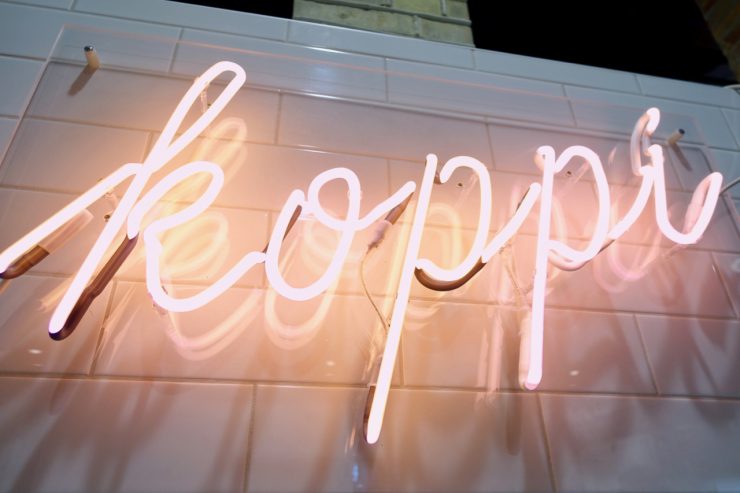
Koppi had a very busy year in 2016, of all the experiences you had, what was the most difficult and what has been the most rewarding for you and the company?
Anne Lunell: It’s hard to say. They have all had really big impacts on the company, but in different ways. But opening the new bar in Malmö has been the hardest work.
Charles Nystrand: The most rewarding has definitely been moving the roastery. Now we have so much more space, the new roasting space is bigger than the whole of our Helsingborg café, so we can work much more efficiently. There are not as many distractions so it’s easier to be focused, but there are some new challenges as well. Before, when the roastery was combined with the cafe, when things are quiet, you could give baristas tasks to help out in the roastery—like labeling or packing. Now the people at the roastery have to do everything. Even if it’s more efficient now, it was nice to have the extra help at times.
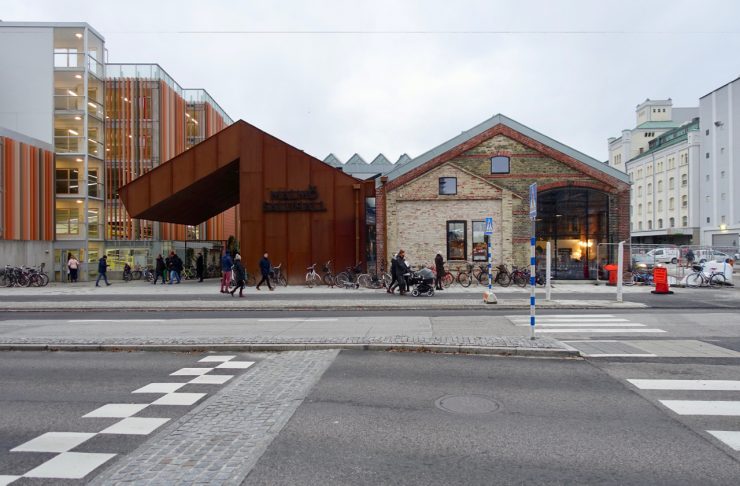
How did you get the opportunity to open up a coffee bar in the new Malmö Saluhall and how long was the process from idea to open?
Lunell: About a year and a half ago, we were asked by the people who were developing the Saluhall, who worked closely with the editors of Fool Magazine, Lotta and Per-Anders Jörgensen, to advise on the curation of vendors. They have visited us in Helsingborg many times and they recommended Koppi for the spot in the hall to bring something new to the city.
How long did it take to open the new coffee bar?
Lunell: When we signed up the building was just a shell, it had no roof, it was growing weeds and grass inside, so that’s why it took so long to open from when we were first asked. It used to be a train repair shed from about 1890 and it was historically protected, but it had been empty for a long time. It was like a ruin in the middle of the city.
We first gained access to our space to start building on 20th of August, but we didn’t begin until October and we opened the 11th of November. But of course, We had done the preliminary drawings and we had the design in mind long before we started building. But we couldn’t really finalize all of the measurements until we had access.
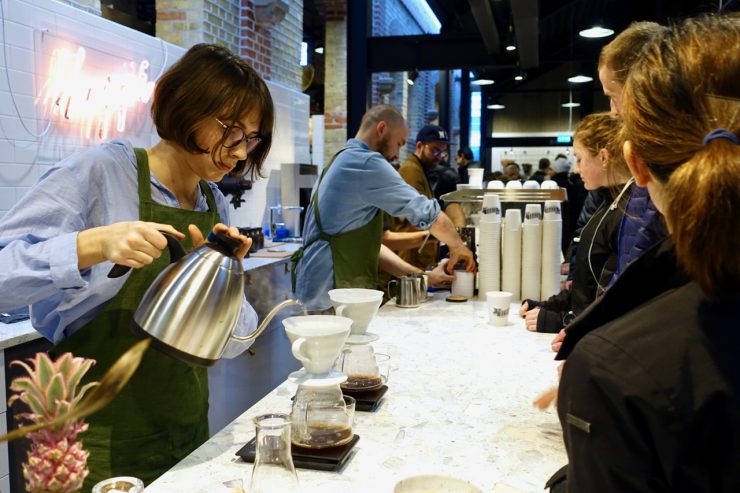
What were the primary goals you wanted to achieve when planning the new location?
Lunell: We have a lot of regulars in the original shop who know how things work and what to expect. They are really interested and ask questions. With the new shop, we wanted things to be more accessible and visible for the guests. We have a much lower bar so we don’t have as much of a barrier between customers. The higher bar can create too much separation between the guest and the staff. Our idea was to invite our customers into the process of making the coffee.
Nystrand: Also opening in a communal space like the food hall is restricting. It would have looked completely different if we opened another stand-alone shop in a different location.
Lunell: In Sweden and most coffee bars, you order and then you go sit down. You don’t have to pay attention to what’s going on or the whole process of what goes into brewing. It’s nice to show people more of what we do so they can gain more appreciation for the craft. If they can see all of the energy that goes into making a cup of our coffee it helps engage them and helps them understand we are serious about what we do. They can learn more about how we do things and we can talk about our goals of working sustainably with farmers.
Nystrand: It also forces us to work clean, which we have always done, but when everything is out in open you can’t be sloppy.
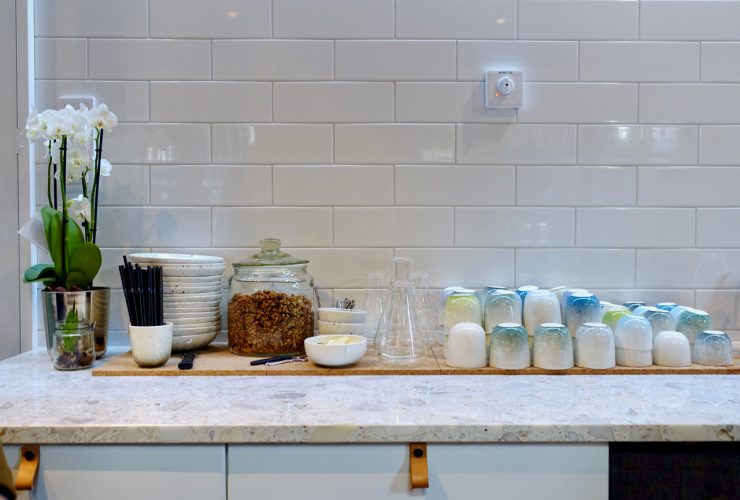
Did you have any outside help designing the bar?
Lunell: It was just us, we knew what layout we wanted and we sourced materials that we liked and then worked with a relative of Charles’ to help draw up the plans.
What are some highlights of the build-out that you are excited about?
Lunell: Design-wise we wanted to keep it simple. The countertop we choose is an Italian tarrazzo and it has a very strong characteristic. The most special thing about what we do is our approach to service and we wanted to create a similar atmosphere to what we have back home in Helsingborg, which can be a challenge in a communal place like a food hall. The bar is pretty and we can choose nice materials, but it should also be efficient with a good layout for a good workflow, and at the same time we want people to come to us because they enjoy what we do and they appreciate the service and our coffee.
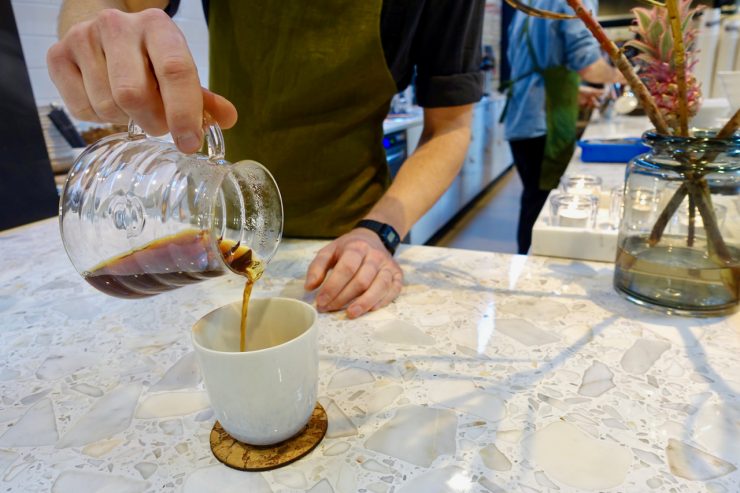
What about those pretty mugs?
Lunell: The mugs are made by a Polish ceramic artist, Magdalena Kałużna, who made my cups for the World Brewer’s Cup competition. So when we were getting closer to opening in Malmö, we decided to ask her if she could make a large number of cups for the cafe. So we gave her the specs for the volume, shape, and colors we were looking and she went to work.
You previously had a pop-up shop in Stockholm. Did you learn anything from that experience that helped you prepare for Malmö? What elements have you brought from your shop in Helsingborg?
Lunell: You always learn most from your mistakes because that is what hurts. It can be anything—it can be a poor bar layout or location. For us, it was hard with Stockholm because the distance kept us from being there frequently enough. So with Malmö, our presence has made things work out much more successfully. When you have a start-up, you need to be there and to be involved. Being there during the building process, when the carpenter needs to come and just being able to do bar shifts. It’s just easier when you can be there in person.
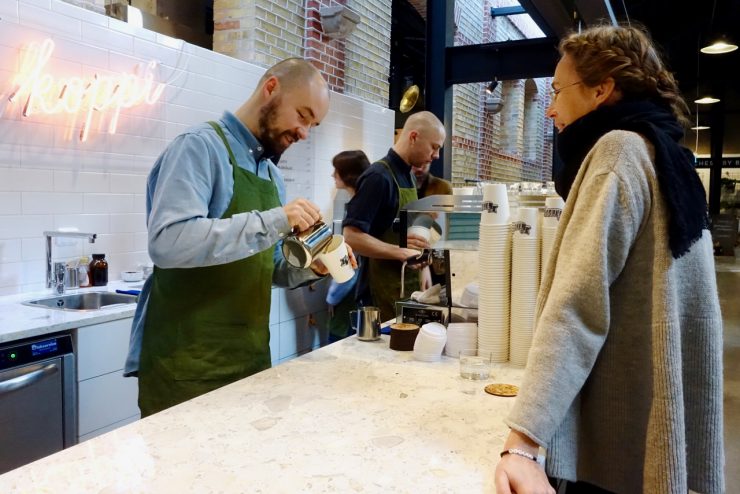
The location of your new coffee bar has some similarities with the Coffee Collective in Torvehallerne (a noted food hall in Copenhagen). Did you talk with the team there for advice that would help you prepare for a busy food hall setting?
Lunell: Yes, we definitely did. We spoke mostly with Klaus (Thomsen) and also with Mikaela (Wallgren) when it came to staff questions. But also inspiration-wise, seeing how great their location turned out to be made it very encouraging for us both. There is a great atmosphere there that we really like and it’s always busy there.
Nystrand: Seeing how successful and nice Torvhallerne turned out, it made us believe that we could succeed with something similar in Malmö and it’s nice to be part of a quality food hall like that.
What is different about being in a food hall?
Lunell: In Helsingborg, people come to us, because they want to go there. They know where we are and come to us. But the idea of a quality food hall brings in more people who don’t know about us and are exposed to us on their way to the butcher for nice meat. So it introduces us to a new customer base and a wider audience. Then there are the coffee enthusiasts who come and hang at the bar and ask questions about what we’re brewing and it creates a good mix with the people who are just discovering us.
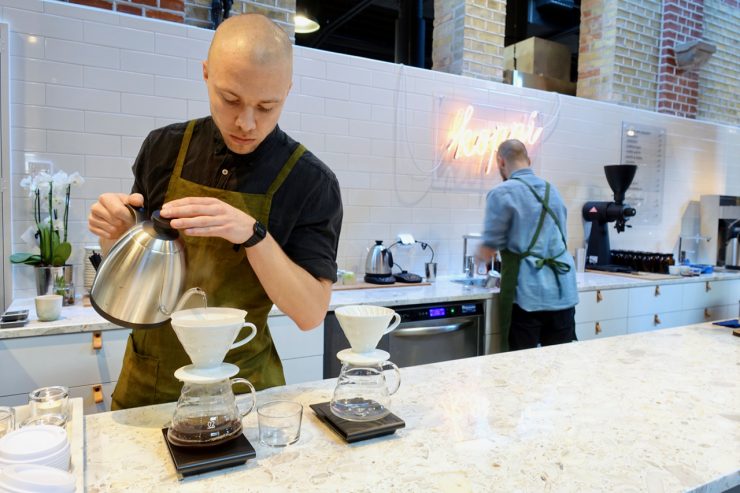
As far as coffee enthusiasts go, do you get more of them visiting in Malmö now that it’s more accessible than Helsingborg?
Lunell: It’s only been seven weeks that we’ve been open, but it feels like, we’ve already noticed that people make two stops. A lot of people still make the journey up to Helsingborg from Malmö. Our original shop is sort of iconic in a way that makes the coffee enthusiasts still want to come visit and experience both locations for sure.
What went into your equipment decisions for the new cafe? What kind of service model have you created in Malmö?
Lunell: We have pretty much the same equipment set-up as we do in Helsingborg. We saw the benefit of having the same espresso machine, the same grinders, so that we could maintain quality control. We also like what we use and it’s nice for comparison and training between the two locations. It also helps us maintain consistency of our products across both locations. We had a Linea (La Marzocco) for almost 9 years, and recently upgraded to the Linea PB in both locations.
Nystrand: For batch brew we use a Fetco and we are currently testing out a brewer from the Swedish company 3Temp, which we like so far. For grinders we use EK43s (Mahlkönig) & Mythos (Victoria Arduino) for espresso. We have two, and we use one for milk drinks and one for espresso. We dial in a little tighter for milk so the espresso is a bit more concentrated versus for espresso on its own.
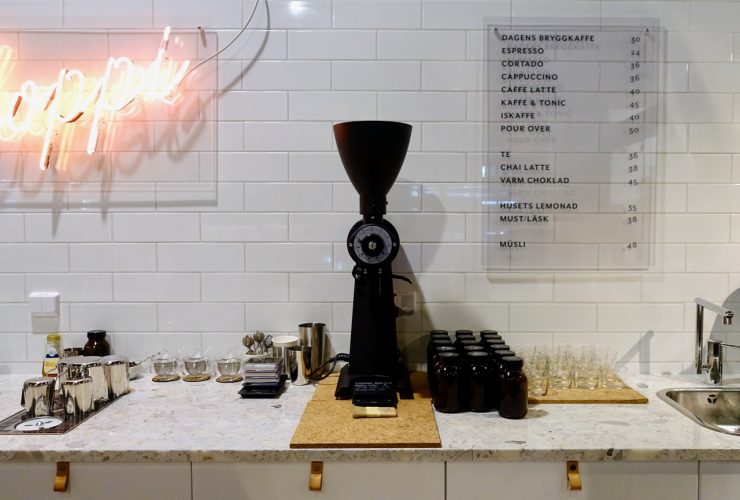
Are there differences in how busy the new Malmö shop is compared to Helsingborg?
Nystrand: It’s different in many ways. There are more obvious rushes. There are super busy times and there are times where it slows quite a bit. On opening weekend we were serving 100 cups an hour for six hours. B
Lunell: But it’s still too early to really say much. The food hall is still so new and people are still discovering it. We have regulars already of course, but I think it will take a few months before it settles for everyone.
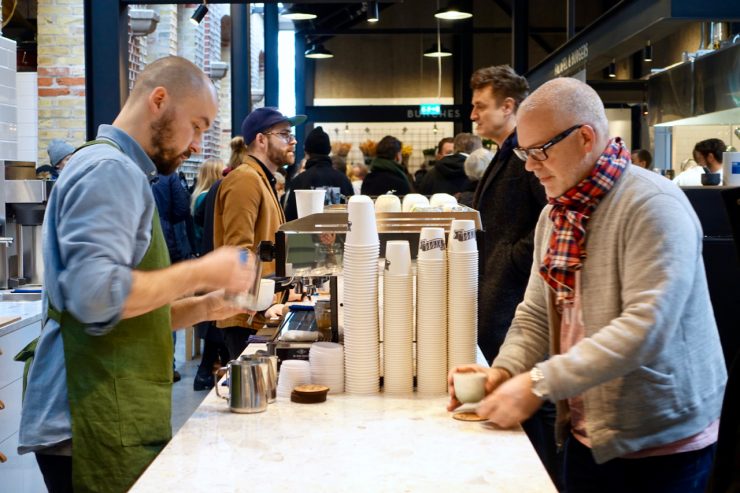
With the opening of the new roastery and coffee bar you hired some new people. What were some of the challenges with practically doubling your employees overnight?
Lunell: We hired five new people in three months. We narrowed down the selection to about 20 people, from a number of good applicants. The personality needs to be right. You can always teach people about coffee, but the attitude and the personality needs to fit with Koppi. We want to have a friendly, humble and service-minded attitude. Those qualities are what makes someone a good representative of our business.
Staffing is hard. You can be really good at coffee, but that doesn’t necessarily make you a good person for service and hospitality. If you’re stressed to hire someone quickly, and don’t plan ahead, it’s easy to make the mistake of hiring someone who already knows about coffee, but isn’t a good fit in the long term.
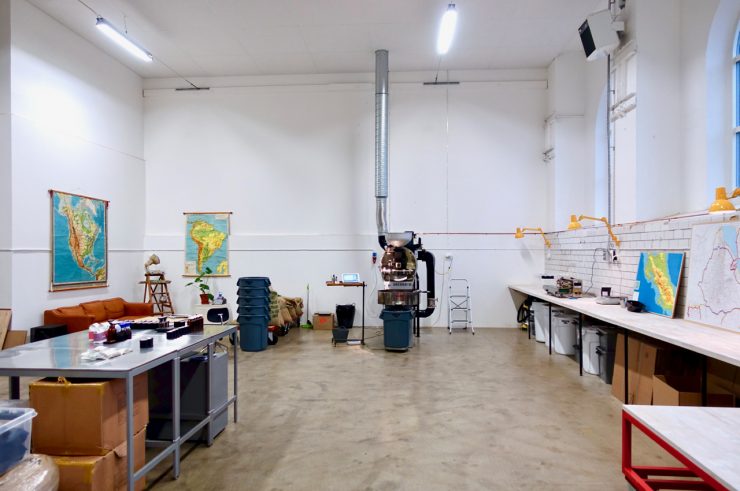
Do you have any plans to open the new roastery up to the public?
Lunell: It will mainly be a production facility, but we think it would be really nice to open on Saturdays and have occasional events there like food events and coffee events in the future.
Nystrand: We have some ideas already, like a chili pop-up.
Your new packaging was just released and it’s quite a change from the previous design. What where some of the thoughts behind the new packaging?
Lunell: We think our coffee deserves a pretty package because of all the work that goes into them and we weren’t happy with the old ones. The design itself felt outdated and you had to flip the bag to see what coffee was inside and it just wasn’t an exciting package. We also wanted the coffee to be more accessible to our customers. We wanted to communicate better, in a more concise way. I’m not a fan of bags that contain a novel written on the bag. It can be overwhelming to the customers who only have an average interest, or just appreciate good taste. For us it might be obvious, but not everyone has the same level of understanding for coffee.
We even have wholesale customers who have misunderstood details about our coffees, so we wanted to make things more clear for the end consumer. We have information cards as well will all the extra details for each coffee, but we don’t want to squeeze it on the packaging.
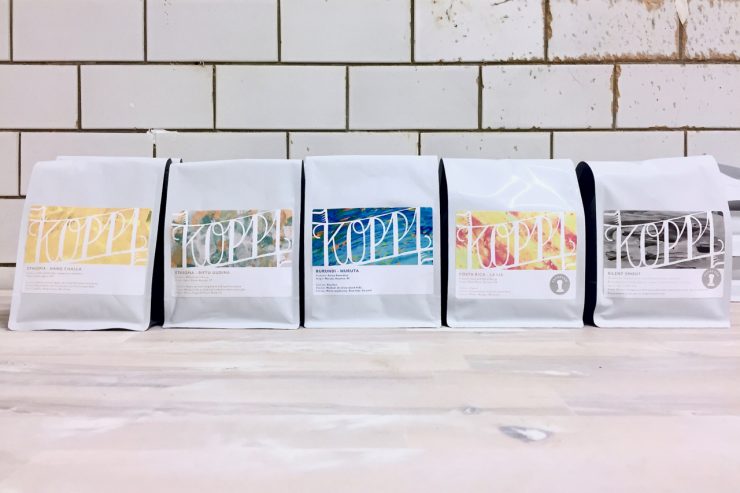
Did you work with a designer on the bags?
Lunell: We worked with a designer but we already had a pretty clear idea of what we wanted. The bags are a custom shape and size with custom printing, but with the label design especially, there was a pretty clear idea. It’s more interesting when things keep changing. It makes it more interesting for us but also for our customers.
The labels all have unique artwork behind each logo, how were those made?
Lunell: Together with our staff we have had evening painting workshops where we just hang out drinking beer and eating pizza and paint a bunch of different patterns. Then we choose fragments of different paintings to use for the labels. So each new coffee is unique and they will keep changing.
After your experience in last year’s Brewers Cup, will you be competing again Anne?
Lunell: Maybe. But I think I would approach it differently. Since we haven’t really been involved with competing for the past decade, other than the Swedish national team for Nordic Barista Cup. But seeing how the competition scene has changed over time, both positive and negative, has been interesting. Since this was my first competition since back in the day, to put yourself under that kind of pressure and see where your limits are can be an interesting challenge. And now I’m more experienced, not with competing, but with coffee. And the rules have changed so much, some of which I think are stupid, and it can be frustrating.
When I competed 10 years ago in the barista competition, I was younger and unexperienced and I was so in awe of the whole industry and the people who were more experienced than me, I didn’t question anything. So, the experience was a bit sugar coated and I didn’t question things as much. Not that it was easy, I practiced like five hours a day and put a lot of effort into it. But now I’ve become older and more cynical and a bit critical of the format. There are parts that I really enjoy and that I think are great, but I think some things are really arbitrary and hold back the creativity and progress of the baristas and the industry. The coffee industry changes so fast now, much faster than the rules of the competition. So it will always be limiting to a certain extent.
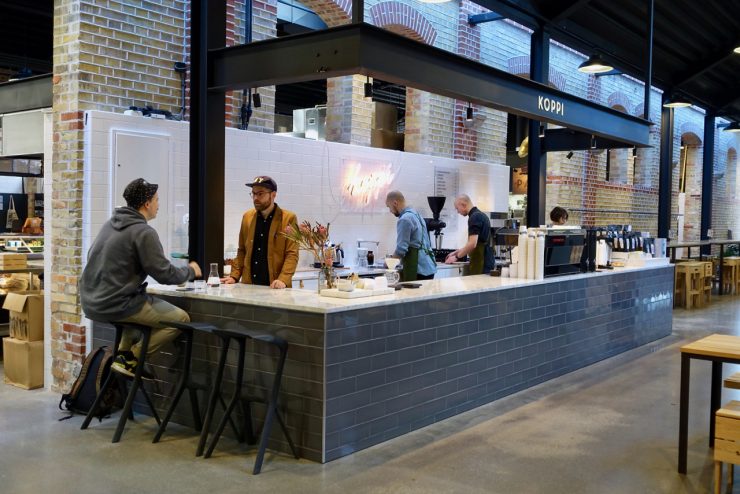
What are you looking forward to the most for Koppi in 2017?
Lunell: The future for us includes trying to perfect or to optimize what we are already doing. Everything from our website to the other aspects of our business. The new shop in Malmö is only seven weeks in, so the first full year will be a big surprise. There is still a lot to learn and things that are unknown, like when it’s going to be busy, etc. And we are working on an upcoming Berliner Weisse with Brewski, a beer brewing company right next door to our roastery in Helsingborg who we have done a few projects with already.
Congratulations and thank you.
Brian W. Jones is the publisher of Dear Coffee, I Love You, author of Brew: Better Coffee At Home, and the creator of Welcome™, an international branding and design studio based in Stockholm, Sweden. Read more Brian W. Jones on Sprudge.
